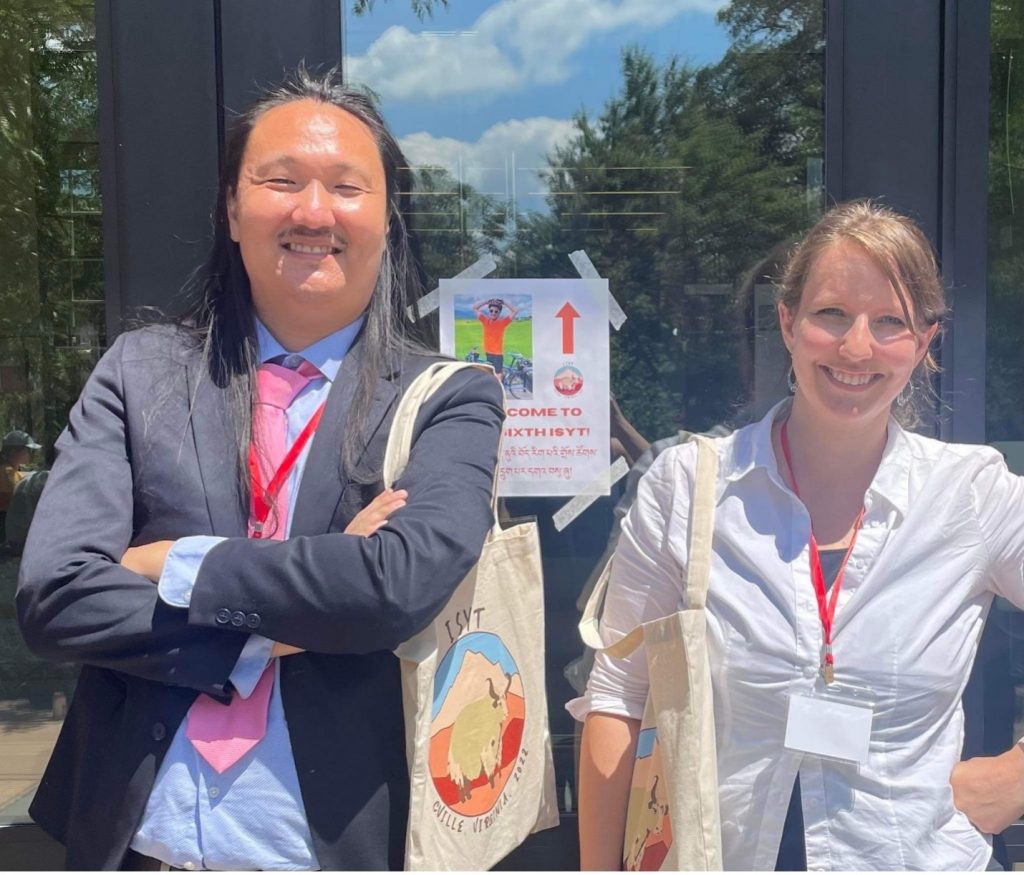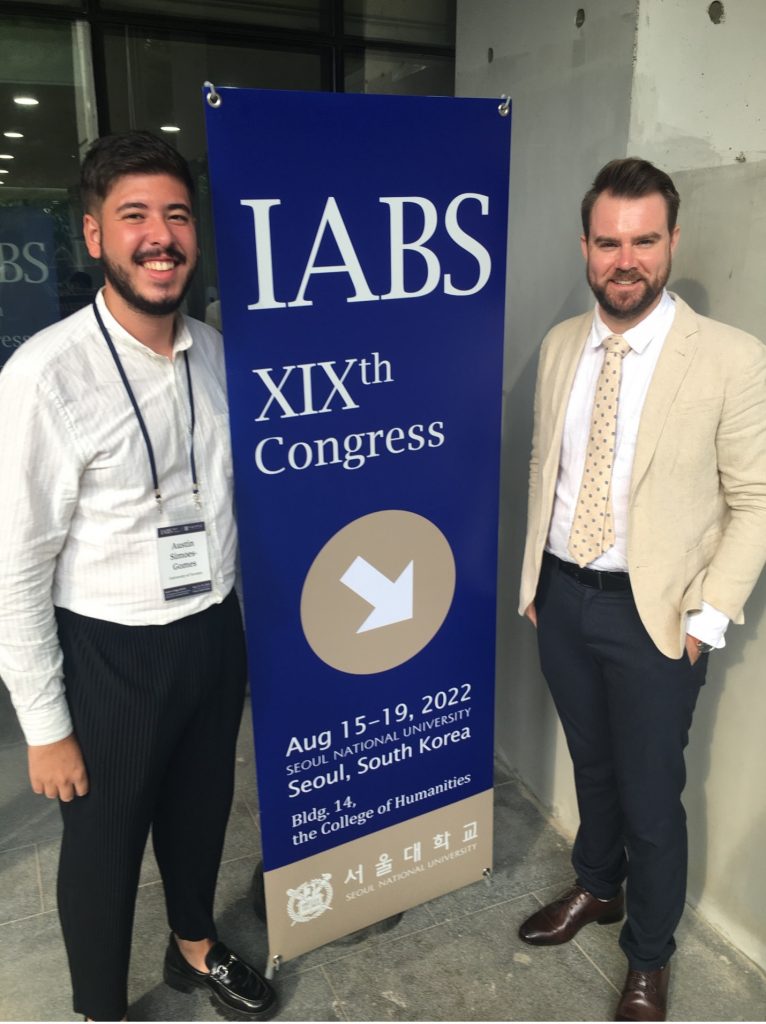by Michael Ium
Emaho!
Welcome to Emaho! Reflections on Buddhist Studies in Toronto, the new blog for the Ho Centre for Buddhist Studies at the University of Toronto. My name is Michael Ium and I’m thrilled to be the first postdoctoral fellow jointly posted in the Department for the Study of Religion and the Ho Centre for Buddhist Studies.
“Emaho” is a putatively Sanskrit phrase used in Tibetan sources as an exclamation of astonishment or wonder. In this spirit, this blog is envisioned as a space to highlight all manner of activities that delight the senses and stimulate the mind, whether related to research, teaching, conference activity, public facing events, and/or Buddhist groups in Toronto.
For this first post, I will be sharing with all of you my experiences attending three international conferences this summer, following years of delays due to the pandemic.
The 16th Seminar of the International Association for Tibetan Studies (IATS 2022), July 3-9, Charles University, Prague, Czech Republic
After years of isolation and monotony, it was an exciting and timorous experience to fly to Prague for my first conference of the summer. Both emotions were rightly justified, as the conference was a hotspot for both professional activity and Covid-19 infections.
Although not able to attend in person, Professor Rory Lindsay gave a paper based in part on his work as an editor and translator for the 84,000 Project, which has partnered with the University of California, Santa Barbara’s Department of Religious Studies to establish the “Buddhist Texts Translation Initiative.” Dr. Lindsay’s talk focused on the Initiative’s translation of the Vajrasamādhi Sūtra, a translation headed by Professor José Cabezón at UCSB and joined by Toronto DSR alumna and PhD candidate at UCSB, Daigengna Duoer. This text was critical to the development of some Chan/Zen/Sŏn traditions, but had little impact in Tibet.

I myself presented a paper for a session on “Buddhist Histories,” based on one chapter of my dissertation. In it, I argue that Ganden Monastery in Tibet is not only a major pilgrimage site, but should also be considered a prototypical Gelukpa pilgrimage site, one that played a major role in the popularization of the Tsongkhapa cult in Tibet.

Lastly, recent DSR PhD alumna Annie Heckman also attended online and presented a paper based on her dissertation research into the creative work of the Tibetan scholar Butön Rinchen Drub on the vinaya tradition in Tibet for Buddhist nuns. The topic of full Buddhist ordination for nuns in the Tibetan Buddhist cultural sphere was also the topic of a lively special round-table organized on the spur of the moment in Prague, as full ordination for Tibetan Buddhist nuns was offered for the first time ever in Bhutan just two weeks before the conference began. According to two experts on Bhutanese religion, Dr. Karma Phuntsho and Dr. Dorji Wangchuk, this monumental event was made possible both by the extensive support of the Bhutanese ruling family (in particular the Queen Mother Tshering Yangdoen Wangchuck), as well as the relative autonomy offered by the fact that the Bhutanese sangha did not face the same internal conservative pressures as more public figures such as the Dalai Lama and Karmapa.
The Sixth International Seminar of Young Tibetologists (ISYT), August 1-5, University of Virginia, Charlottesville, United States
Geared to Tibetologists in the early stages of their careers and following a delay of one year, the sixth meeting of the International Seminar of Young Tibetologists took place this year at the University of Virginia. I presented a paper arguing for a unitary approach to understanding prophecy in Tibet that incorporates both textual and non-textual forms of prophecy. This topic may appear again as the focus of a potential symposium in the Ho Centre next year; stay tuned! Unfortunately, due to logistical issues Professor Rory Lindsay was forced to cancel his paper on the Tibetan Qur’ān, and in particular its use of traditionally Buddhist vocabulary. Annie Heckman was also in attendance with her lovely daughter Pema, as she has settled in the area as a translator for the 84 000 Project.

The 19th Congress of the International Association of Buddhist Studies, August 15-19, Seoul National University, Seoul, South Korea
Following a delay of two years, the 19th Congress of the International Association of Buddhist Studies was held successfully in Seoul this year, five years after the previous congress at the University of Toronto in 2017. This long-awaited meeting was attended by numerous members of the Ho Centre. Although unable to attend in person, Professor Christoph Emmrich presided over the boisterous General Meeting in his capacity as General Secretary for the IABS Board. He also convened a panel on “New Research in Newar Buddhist Studies,” with two of his students from the Ho Centre presenting. Ian Turner gave a paper imagining the house of the Newar Buddhist householder as “a place…at the ritual interface of substance and presence, the refuge of the human and the other-than human.” Austin Simoes-Gomes presented on the Newar practice of pūjā to the goddess Hāratī, based on his recent fieldwork in Kathmandu.

The Ho Centre was also well represented in the Section on Tibetan Buddhism. DSR alumna Daigengna Duoer presented on her dissertation research into Transnational Buddhism in Early Twentieth-Century Inner Mongolia and Manchuria. I myself presented a paper arguing for the importance of Tsongkhapa’s status as a mahāsiddha to the early patronage of the Gelukpa in Tibet.

Professor Sarah Richardson convened a panel on “Wall Paintings in Buddhist Asia,” which sought to interrogate the relationship “between ‘elite’ circles of textual production and ‘popular’ domains of devotional practice” via the phenomenon of wall paintings. She also contributed a paper to this panel based on her research on the Tibetan monastery of Shalu, arguing that depictions of everyday people in narrative paintings at Shalu served to socialize lay visitors into particular “modes of behavior, devotion, or hierarchy.”

Dr. Sarah Richardson at IABS, Seoul National University, Seoul, South Korea 
Michael Ium and Sarah Richardson at IABS, Seoul National University, Seoul, South Korea 
IABS conference attendees reflect on deceased members at the closing night dinner. Commemorated here is John Huntington who taught a long career at the Ohio State University.
Elsewhere, PhD Candidate Tony Scott co-convened a panel focused on the Milindapañha or Questions of Milinda, presenting a paper on one controversial commentary to this work in post-colonial Burma. He was also joined on this panel by Bryan Levman (DSR alumnus) whose paper focused on an examination of the origins of the Milindapañha by comparing the extant Pāli and Chinese works.

Finally, Rachelle Saruya joined the conference via Zoom to present a paper on modern Burmese Buddhism in the section for Gender in Buddhism. Based on her ethnographic research in both Myanmar and the San Francisco Bay Area, she argues that it was Burmese Buddhist women who created much of the demand for Abhidhamma philosophical teachings, arguing that “we need to pay more attention to the often ‘invisible women’ that create change, but are subsumed under the monk author or teacher.”
Lastly, for me, one of the highlights of the Congress was an informal dinner that brought together numerous current and former members of the Ho Centre for a night of nourishing Korean food and drink, and collegiality!
Emaho!

(From left to right: PhD Candidate Ian Turner; incoming DSR Postdoctoral Fellow Alana Souza; PhD Candidate Austin Simoes-Gomes; Postdoctoral Fellow Michael Ium; alumna and UCSB PhD Candidate Daigengna Duoer; Anthony Fiorucci (Uppsala University); Patrick Lambelet (UCSB); alumna and current UCSB Master’s student Euiyeon Kim).

